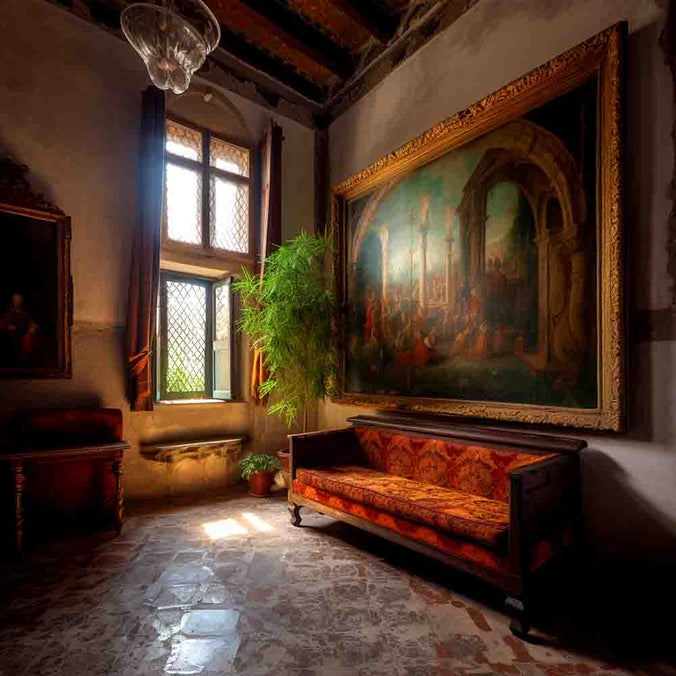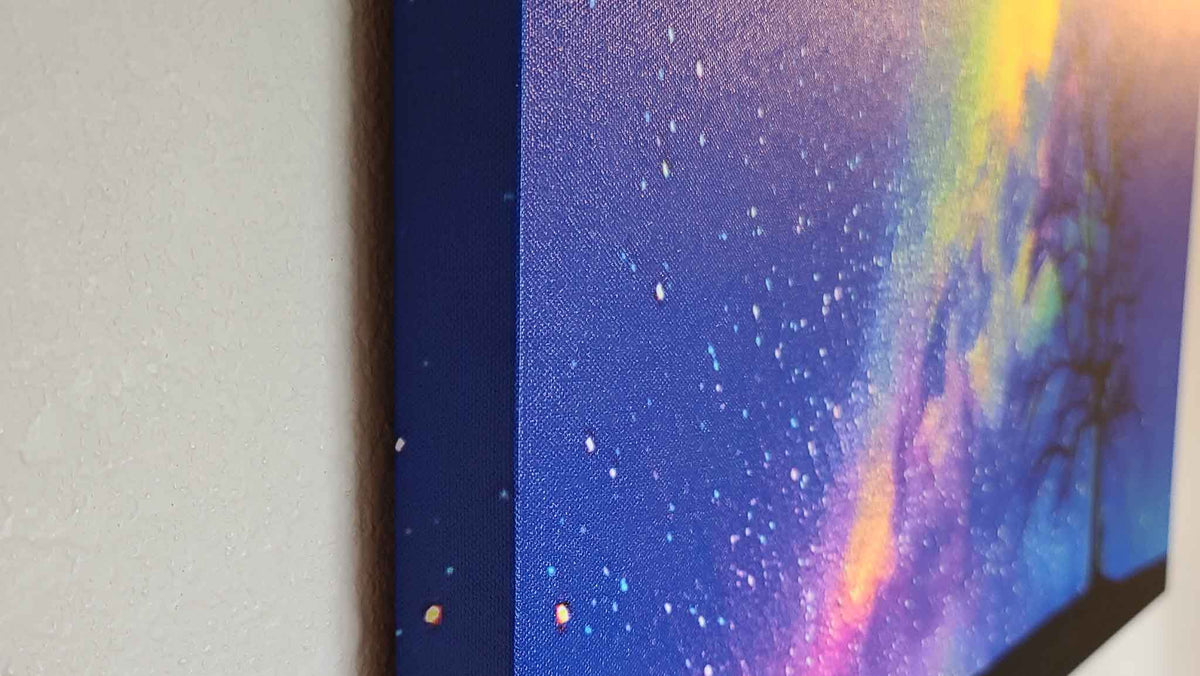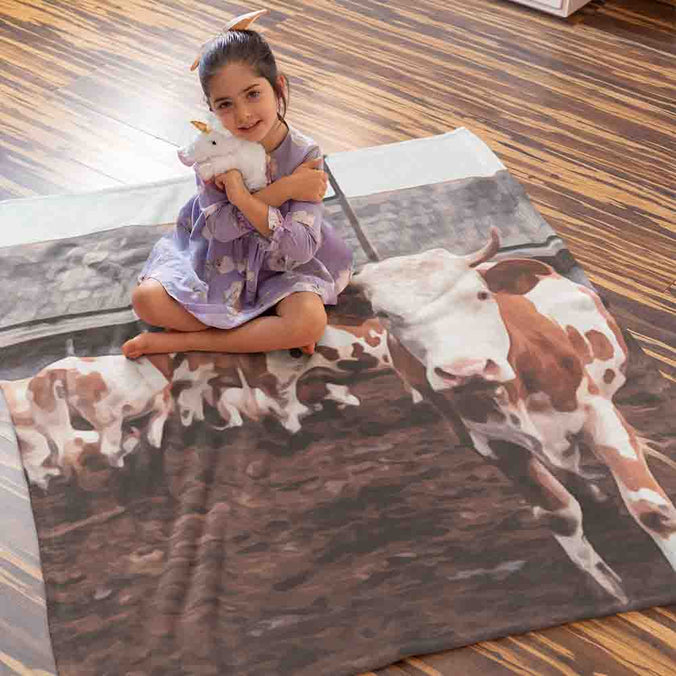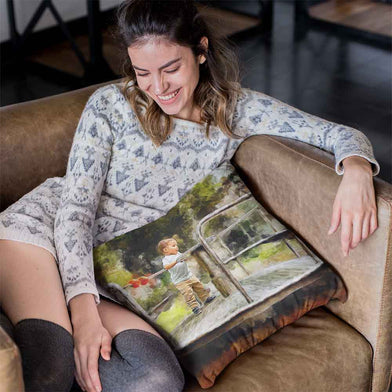How to Illuminate Wall Art: The Lighting Game

How to Illuminate Wall Art
To effectively illuminate wall art, consider using picture lights, track lighting, recessed lighting, wall washers, accent lighting, or LED strip lights. Ensure the light source has a high color rendering index (CRI) for accurate color representation and opt for LED or UV-filtered lights to minimize potential damage from heat and UV exposure. Avoid overly bright or harsh lighting to prevent glare and maintain the visual appeal of your artwork.
Selecting the appropriate lighting options
Track lights and recessed lights are popular choices for illuminating wall art. Track lights allow for quick adjustments and can be installed with LED bulbs for energy efficiency and low heat output. Recessed track lighting offers an elegant finish, installed beneath a false ceiling or bulkhead. Ceiling fixtures, adjustable track lights, and spotlights are other versatile options for different wall art arrangements.
Coordinating lamps and lights with the artwork
Selecting lamps and lights that match the color and style of your artwork can enhance the overall aesthetic. Consider the color rendering index (CRI) of the lighting, with a CRI of 90 or higher being ideal for accurate color rendering. LED lights are a preferable choice due to their low heat and UV emissions.
Choosing the right type of lighting
The type of lighting used can impact the longevity and vibrancy of your wall art. Opt for lighting that delivers even illumination across the entire surface area of the art piece. LEDs are a reliable choice for their longevity and minimal heat production. Spotlights, spotlights, and track lighting are other suitable options, with placement at a thirty-degree angle to minimize glare and shadows.
Ensuring sufficient lighting
Ensure your lighting scheme provides adequate illumination for your wall art. Consider the size and type of art and the number of light fixtures required. Position the light beams so they are brightest in the middle and fade to a soft, diffused edge.
Planning lighting before purchasing art
Consider lighting requirements before buying art to protect it from damage and enhance its beauty. Use LED lights for their energy efficiency and absence of ultraviolet light. Position artwork in shaded areas to avoid direct sunlight exposure, and choose bulbs with a high CRI percentage for accurate color representation.
The Importance of Lighting for Aesthetics, Ambiance, and Mood

Proper lighting in your home is not just about visibility; it also plays a significant role in creating an atmosphere and setting the mood. This section will delve deeper into the importance of lighting your home and artwork for aesthetics, ambiance, and mood, discussing the impact of different lighting types, the role of color temperature, and how to create a cohesive lighting plan.
The Impact of Different Lighting Types on Aesthetics, Ambiance, and Mood
Ambient lighting
Ambient lighting, also known as general lighting, provides overall illumination in a room. This type of lighting sets the tone and creates a comfortable atmosphere, allowing occupants to move around safely and perform daily tasks. Soft, warm ambient lighting can make a space feel cozy and inviting, while bright, cool lighting can create a more energetic and focused atmosphere. The proper balance of ambient lighting can enhance the appearance of wall art by providing a consistent, diffused light.
Task lighting
Task lighting focuses on specific areas or surfaces, providing concentrated light for specific tasks, such as reading, cooking, or working. While task lighting may not directly illuminate wall art, it contributes to the overall aesthetic of a room by adding depth and dimension. When planning your lighting scheme, consider incorporating task lighting to highlight functional areas and create visual interest.
Accent lighting
Accent lighting is used to draw attention to specific features, such as artwork, architectural details, or unique design elements. By highlighting these focal points, accent lighting can enhance the overall aesthetic of a space and create a sense of drama or intrigue. To properly illuminate wall art, consider using accent lighting techniques, such as spotlights or track lighting, to emphasize the artwork and create a visually striking display.
The Role of Color Temperature in Aesthetics, Ambiance, and Mood
Color temperature plays a crucial role in establishing the ambiance and mood of a space. Measured in Kelvins (K), color temperature ranges from warm (lower Kelvin) to cool (higher Kelvin) tones. Warm lighting (2700K to 3000K) creates a cozy, inviting atmosphere, while cool lighting (4000K to 6500K) promotes focus and energy.
When illuminating wall art, consider the color temperature of your lighting to ensure it complements the artwork and enhances the desired mood. For example, warm lighting may accentuate the rich, warm tones in a landscape painting, while cooler lighting may emphasize the bold colors in a modern art piece.
Creating a Cohesive Lighting Plan for Aesthetics, Ambiance, and Mood
To achieve a balanced and visually appealing lighting scheme, consider the following steps:
- Assess the function and purpose of each room: Before selecting lighting fixtures and arrangements, consider the activities that will take place in each space. This will help you determine the appropriate type and level of lighting needed to support these activities and create the desired ambiance.
- Layer your lighting: Incorporate a mix of ambient, task, and accent lighting in each room to create depth, dimension, and visual interest. This layered approach will ensure that your wall art is adequately illuminated and that the overall aesthetic of the space is cohesive and harmonious.
- Choose appropriate fixtures and styles: Select lighting fixtures that complement the architectural style and décor of your home. Consider the scale, proportion, and materials of the fixtures, as well as their compatibility with the artwork and other design elements in the space.
- Experiment with dimmers and controls: Dimmer switches and lighting controls allow you to adjust the intensity and color temperature of your lighting, providing the flexibility to create different moods and atmospheres. Experiment with these options to find the ideal lighting settings for each room and to highlight your wall art effectively.
- Consider the placement of artwork and lighting fixtures: When planning your lighting scheme, take into account the size, shape, and location of your wall art. Position lighting fixtures at an appropriate distance and angle to illuminate the artwork evenly and minimize glare and shadows. Also, consider the impact of natural light sources, such as windows and skylights, on the appearance and preservation of your artwork.
- Utilize the principles of the Income School's Project 24 for SEO optimization: To ensure your blog post on illuminating wall art effectively reaches your target audience, adhere to the SEO guidelines outlined by the Income School and their Project 24. Focus on providing valuable, informative content that addresses the needs and interests of your readers. Incorporate relevant keywords and phrases, optimize headings and subheadings, and use internal and external linking strategies to boost your blog post's visibility and search engine ranking.
- Highlight the emotional impact of lighting on artwork: The right lighting can evoke strong emotions, bringing the artwork to life and eliciting a powerful response from viewers. Experiment with different lighting techniques and color temperatures to discover the most effective way to showcase your wall art and create a memorable viewing experience. By carefully considering the interplay between light and art, you can transform your living space into a dynamic and emotionally engaging environment.
- Prioritize energy efficiency and sustainability: As you plan your lighting scheme, consider the environmental impact and long-term costs of your choices. Opt for energy-efficient LED bulbs, which not only provide high-quality, consistent illumination but also consume less energy and have a longer lifespan than traditional incandescent or halogen bulbs. By prioritizing sustainability and energy efficiency, you can reduce your carbon footprint and save on energy costs while still achieving a stunning visual display.
- Experiment with smart lighting technology: Smart lighting systems offer the ability to control and customize your lighting environment with ease, allowing you to fine-tune the ambiance and mood of your space. Integrate smart bulbs and lighting controls into your home to enable remote access, scheduling, and automation features. This technology can help you create the perfect lighting conditions to showcase your wall art while also offering added convenience and energy-saving benefits.
- Don't be afraid to consult with professionals: If you feel overwhelmed by the task of illuminating your wall art or designing a cohesive lighting plan, consider seeking the advice of a professional interior designer or lighting consultant. Their expertise can help you navigate the complexities of lighting design and ensure that your artwork is displayed to its fullest potential.
Proper illumination of wall art is essential for showcasing its beauty and enhancing the aesthetics, ambiance, and mood of your living space. By considering factors such as lighting type, color temperature, fixture placement, and energy efficiency, you can create a visually stunning and emotionally impactful environment that highlights your artwork and elevates your home's overall design. Remember to keep SEO optimization principles in mind to share your insights and knowledge effectively with your blog audience.
Leave A Reply
Your email address will not be published. Required fields are marked *






